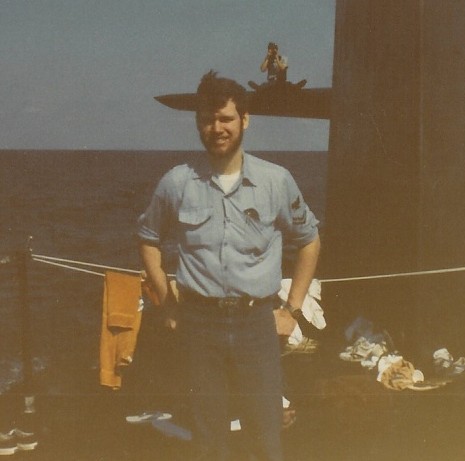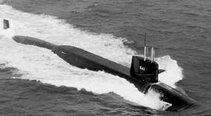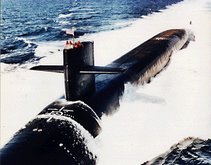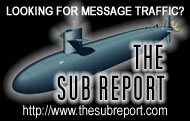
First Atlantic SOSUS Stations (Graphic: US Navy Undersea Warfare Magazine)
Since the close of the Cold War the national security role of the SOSUS system has diminished and it has been utilized for more marine environment research applications. But the national security role of SOSUS may be expanded again, this time in response to the terrorist threat and our vulnerability to an attack via a merchant ship. According to this recent Sea Power Magazine article:
The Navy and other U.S. government agencies intend to identify and track the world’s 121,000 merchant vessels with the same persistence and precision that characterized the Navy’s location, identification and tracking of Soviet submarines during the Cold War era.

Container Ship (Source: NOAA)
SOSUS will become part of a larger integrated data collection system to track and provide real time identification of merchant ships. Additional components of this intelligence data collection system would include space-based surveillance, an existing maritime Automatic Identification System (AIS) and newly developed Advanced Deployable Systems (ADS).
SOSUS will be expanded and upgraded so that acoustic surveillance of ports and littoral areas can be included. These littoral areas have high ambient noise levels that make it difficult to conduct acoustic surveillance.
A comprehensive system to track merchant shipping is one method that could help prevent a large scale sea-based terrorism event. In this link "Terror at Sea the Maritime Threat" author Ophir Falk documents how terrorist groups such as Al Qalda not only have been a threat to shipping but may turn to using vessels carrying hazardous materials as terrorist weapons. For example from the article:
The recent appointment of Saud Hamid al-Utaibi as new al-Qaida commander in Saudi Arabia-largely thanks to his expertise in marine terror-has caused many security experts to raise the threat level to maritime security. Hamid al-Utaibi's experience includes an active role in blowing up the USS Cole in October 2000 and in attacking the French Limburg tanker two years later-both rammed by exploding speedboats in Yemeni waters. Subsequent to the appointment, the United States warned a number of Mediterranean states that maritime attacks involving chemical agents might be imminent.
Of additional concern is what could be called "the poor man's missile platform". States that sponsor terrorist activities such as Iran have recently experimented with outfitting merchant vessels with Scud missiles. It was also widely reported in 2003 that Al Qaeda may also have a navy of sorts consisting of fishing boats and cargo vessels.
The integration of all this data from so many sources seems like a monumental task, but a task worth doing. I can see additional benefits as well as increasing port security, such as providing information for use in the Proliferation Security Initiative, help in locating lost or missing ships in emergencies as well as knowing where all the good targets are if things ever get hot. But I wonder how a operational conversation would be if SOSUS starts tracking all the merchant ship traffic. Will the sonar operator's report be "Duty Officer I hold Sierra 119,991 leaving Doha, Qatar course 045, speed 12 knots, range... ah hell what do I care we're in Virginia" ?









1 comment:
for further information concerning maritime security please link into:
www.asi-securitysolutions.com
Post a Comment